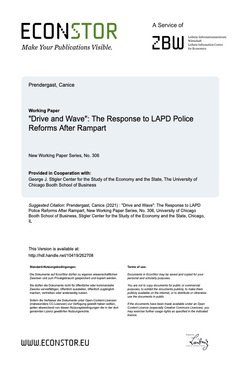By Jorja Leap, Jeffrey Brantingham, Todd Franke, Susana Bonis
The Community Safety Partnership emerged as a comprehensive violence reduction and community safety strategy first implemented in four public housing developments in 2011 by the Los Angeles Police Department, the Housing Authority of the City of Los Angeles (HACLA), and the City of Los Angeles’ Office of Gang Reduction and Youth Development (GRYD). On the basis of its impact in these settings, CSP has been recognized as a state‐of‐ the‐art counter‐violence strategy and has received extensive coverage in the media. However, despite the commendation and media attention, there has been limited external assessment of the CSP.1 Beyond this, there have been no formal evaluations of the program to determine if it, in fact, works. Additionally, despite the promise and early successes CSP encountered, as time passed, challenges arose surrounding fidelity to the CSP model, leading to a need for the model to be documented and formalized.
This evaluation of the LAPD Community Safety Partnership (CSP) was designed to examine both the impacts and challenges that have emerged over eight years of experience with this non‐traditional, community safety initiative. Over the course of the last year, three teams of researchers from UCLA have rigorously evaluated this model, using both quantitative and qualitative research methods to examine crime data as well as draw upon the viewpoints of law enforcement, residents, institutional partners, and community‐based organizations.
Ultimately, the evaluation study set out to holistically assess the CSP and its impact, focusing on two of the four public housing developments where CSP was originally implemented: Nickerson Gardens in Watts and Ramona Gardens in Boyle Heights. The evaluation plan, detailed in the first chapter of the report (“Overview of the CSP Evaluation: Methodology and Origins”), was established prior to engaging in any research activities. Over the past year, the goal of the evaluation study was to assess whether the CSP model actually works and – if CSP is determined to be effective – how the key elements of this model of law enforcement can be implemented nationally. To accomplish this, it was critical to offer recommendations on what is required to retain CSP’s effectiveness as it expanded, improved its operations, and was institutionalized within the LAPD. The meta‐analysis of all data collection led to the following conclusions regarding the effectiveness of the CSP model and the challenges it faces.
KEY EVALUATION FINDINGS
It is clear from the data collection, analysis, and findings described in the research chapters in the report that the CSP Comprehensive Safety Model effectively works by building trust and relationships between CSP officers and community residents and stakeholders. These relationships and the actions they give rise to, in turn, ensure that the community feels protected and strengthened. As trust increases between residents and the LAPD, the evaluation research indicates that residents do reach out to officers when there are problems. This also contributes to a greater sense of safety, further reflected by the decreases in violent crime. The key evaluation findings consisted of the following:
CSP’s trust and relationship‐based partnership policing improves resident perceptions of safety.
Implementation of CSP helps reduce the dangerous conditions at CSP sites that historically fueled violent crime and enhanced gang control.
By disrupting gang intimidation and control of public spaces, CSP increases residents’ ability to gather and enjoy public spaces, facilities, and programs.
As CSP works to reduce dangerous and high‐risk conditions that fuel crime, residents’ and stakeholder trust grows.
Analysis of LAPD crime statistics demonstrates that crime reductions associated with CSP sites are even greater than overall crime declines across the City.
It is clear that the impact of CSP is not narrowly limited to reducing gang violence; instead, its efficacy for other epidemic crises, such as homelessness, is promising and should be implemented.
Los Angeles: UCLA, 2020. 212p.




